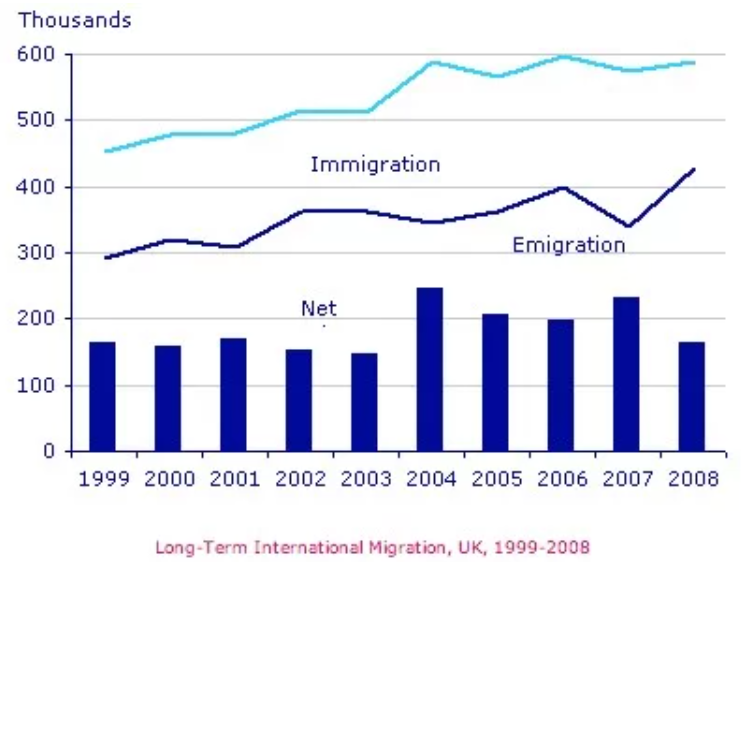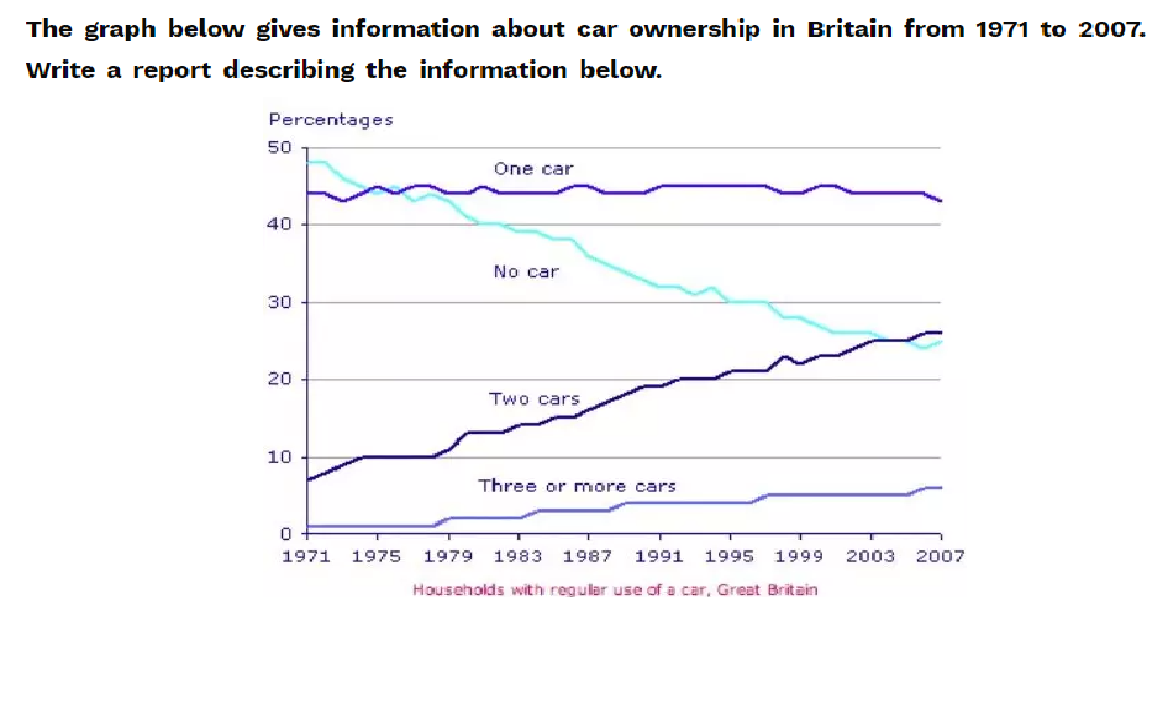skinnypeter
Oct 6, 2021
Writing Feedback / The chart illustrates the long-term international migration in the United Kingdom [4]
The chart illustrates the rate of immigration, emigration, and net migration in the UK from 1999 to 2008.
Overall, it is clear that UK immigration and emigration experienced a rise over the period shown, but a much higher rate of immigrants in comparison with emigrants. Net migration peaked in 2004 and 2007.
In 1999, the immigration rate was about 450,000 people, while the figures for emigration and net migration registered around 300,000 and 180,000 respectively. From 1999 to 2004, the number of people who immigrated to the UK rose by nearly 150,000 people. However, there was just a small growth in emigration from 300,000 people in 1999 to around 350,000 in 2002 before remaining at a similar level until 2004. Net migration peaked at about 250,000 people in 2004.
After 2004, the immigration rate remained stable until 2008, while emigration saw a significant fluctuation. To clarify, the rate of emigration declined suddenly to over 320,000 people in 2007 before reaching plateau at over 400,000 in 2008. As a result, net migration increased considerably to around 240,000 people in 2007 before falling back to over 150,000 in 2008.
(IELTS TASK 1) INTERNATIONAL MIGRATION IN UK
The chart illustrates the rate of immigration, emigration, and net migration in the UK from 1999 to 2008.
Overall, it is clear that UK immigration and emigration experienced a rise over the period shown, but a much higher rate of immigrants in comparison with emigrants. Net migration peaked in 2004 and 2007.
In 1999, the immigration rate was about 450,000 people, while the figures for emigration and net migration registered around 300,000 and 180,000 respectively. From 1999 to 2004, the number of people who immigrated to the UK rose by nearly 150,000 people. However, there was just a small growth in emigration from 300,000 people in 1999 to around 350,000 in 2002 before remaining at a similar level until 2004. Net migration peaked at about 250,000 people in 2004.
After 2004, the immigration rate remained stable until 2008, while emigration saw a significant fluctuation. To clarify, the rate of emigration declined suddenly to over 320,000 people in 2007 before reaching plateau at over 400,000 in 2008. As a result, net migration increased considerably to around 240,000 people in 2007 before falling back to over 150,000 in 2008.

Untitled.png


